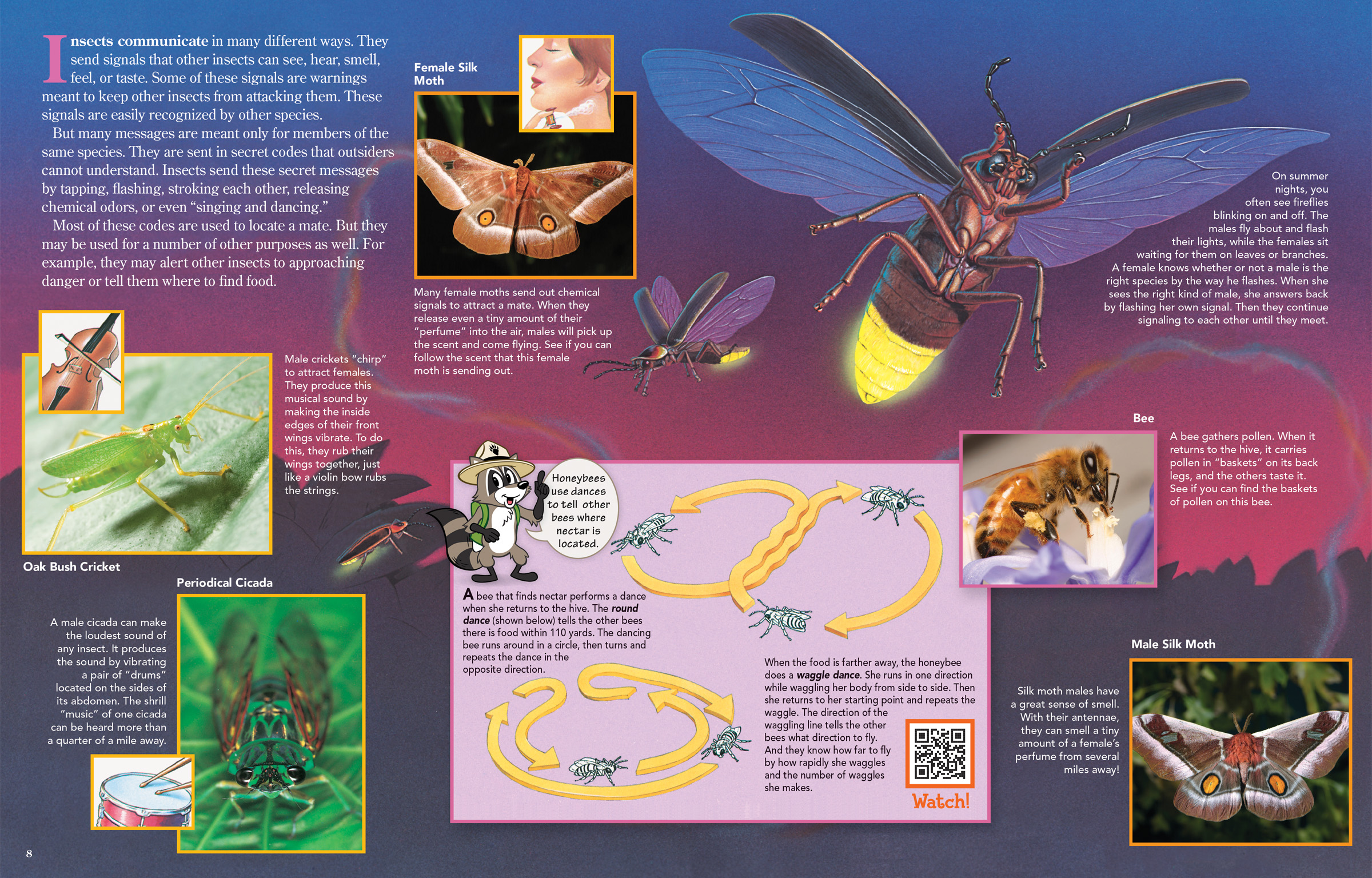
Insect Signals
ByInsects communicate in many different ways. They send signals that other insects can see, hear, smell, feel, or taste. Some of these signals are warnings meant to keep other insects from attacking them. These signals are easily recognized by other species.
But many messages are meant only for members of the same species. They are sent in secret codes that outsiders cannot understand. Insects send these secret messages by tapping, flashing, stroking each other, releasing chemical odors, or even “singing and dancing.”
Most of these codes are used to locate a mate. But they may be used for a number of other purposes as well. For example, they may alert other insects to approaching danger or tell them where to find food.
Many female moths send out chemical signals to attract a mate. When they release even a tiny amount of their “perfume” into the air, males will pick up the scent and come flying. See if you can follow the scent that this female moth is sending out.
 Male crickets “chirp” to attract females. They produce this musical sound by making the inside edges of their front wings vibrate. To do this, they rub their wings together, just like a violin bow rubs the strings.
Male crickets “chirp” to attract females. They produce this musical sound by making the inside edges of their front wings vibrate. To do this, they rub their wings together, just like a violin bow rubs the strings.
A male cicada can make the loudest sound of any insect. It produces the sound by vibrating a pair of “drums” located on the sides of its abdomen. The shrill “music” of one cicada can be heard more than a quarter of a mile away.
Honeybees use dances to tell other bees where nectar is located. A bee that finds nectar performs a dance when she returns to the hive. The round dance (shown below) tells the other bees there is food within 110 yards. The dancing bee runs around in a circle, then turns and repeats the dance in the opposite direction.
When the food is farther away, the honeybee does a waggle dance. She runs in one direction while waggling her body from side to side. Then she returns to her starting point and repeats the waggle. The direction of the waggling line tells the other bees what direction to fly. And they know how far to fly by how rapidly she waggles and the number of waggles she makes.
On summer nights, you often see fireflies blinking on and off. The males fly about and flash their lights, while the females sit waiting for them on leaves or branches. A female knows whether or not a male is the right species by the way he flashes. When she sees the right kind of male, she answers back by flashing her own signal. Then they continue signaling to each other until they meet.
A bee gathers pollen. When it returns to the hive, it carries pollen in “baskets” on its back legs, and the others taste it. See if you can find the baskets of pollen on this bee.
Silk moth males have a great sense of smell. With their antennae, they can smell a tiny amount of a female’s perfume from several miles away!

